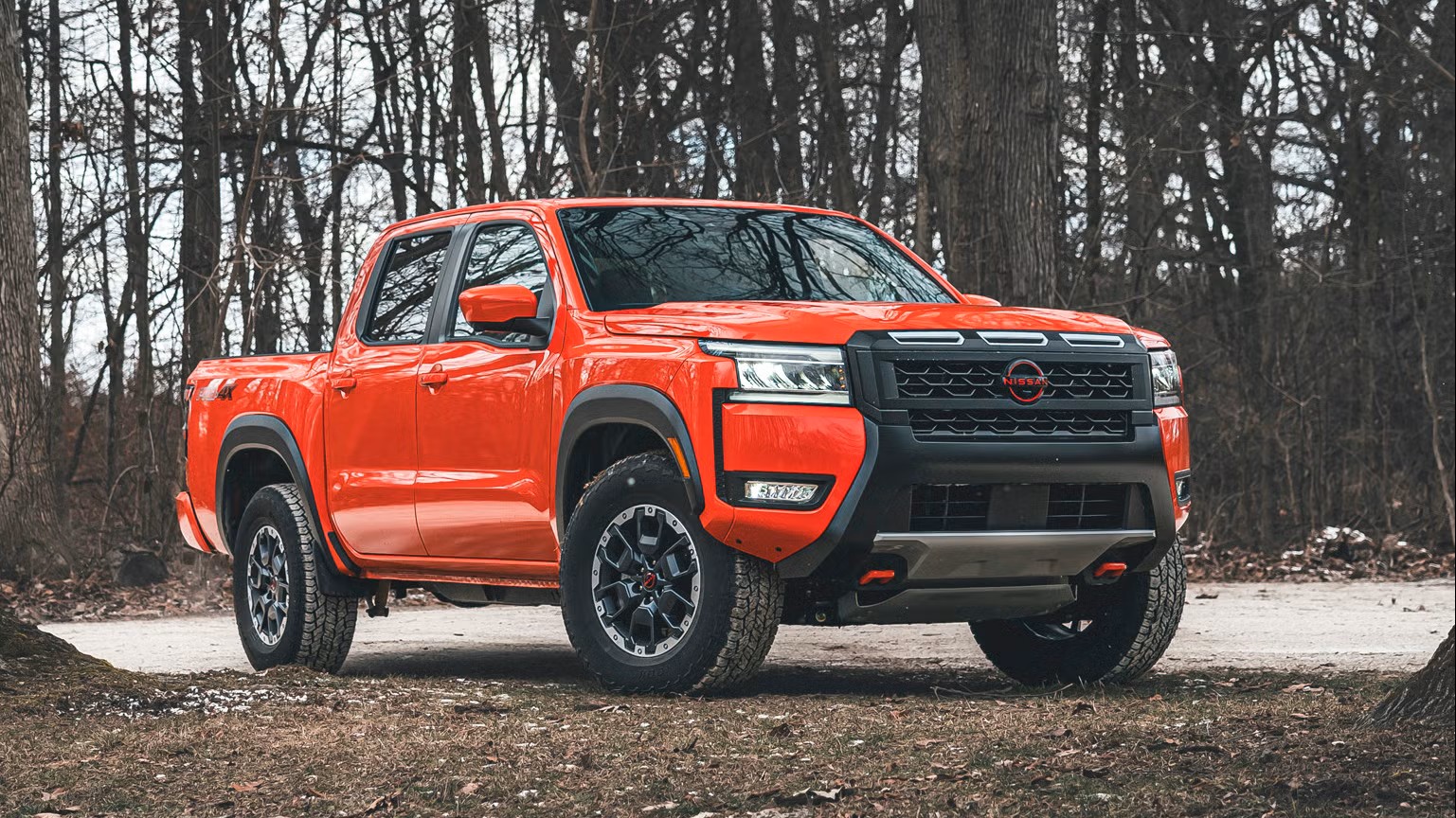When investing in a pickup truck, durability isn’t just a preference it’s often a necessity. These workhorses face punishing conditions that would break lesser vehicles: construction sites, off-road adventures, towing heavy loads, and exposure to harsh elements year after year.
While manufacturers all claim their trucks are built to last, real-world experience tells a different story. Some pickups can accumulate 250,000+ miles with minimal issues, while others begin to fall apart before reaching six figures on the odometer.
For truck owners who depend on their vehicles for livelihood or lifestyle, choosing the right model can mean the difference between a decade of reliable service and a money pit of endless repairs.
This guide examines five legendary trucks that have proven their longevity through punishing conditions and heavy use, alongside five models that have developed reputations for premature failures and chronic problems.
Whether you’re a contractor, rancher, outdoor enthusiast, or simply someone who demands reliability, understanding which trucks can truly go the distance will help you make an informed decision for your next decade of driving.
5 Trucks That Can Survive 10 Years of Abuse
These exceptionally durable workhorses shrug off a decade of punishing treatment, from overloaded beds to off-road adventures, while maintaining their structural integrity and mechanical reliability.
Their overbuilt frames, bulletproof drivetrains, and thoughtfully engineered components continue performing flawlessly long after lesser trucks have been relegated to the scrapyard.
Strategic use of corrosion-resistant materials and comprehensive rustproofing ensure these stalwart machines resist the ravages of time, weather, and harsh working conditions.
Owners report confidently tackling demanding jobs year after year, with many celebrating 250,000+ miles of hard labor without experiencing major mechanical failures or diminished capabilities.
1. Toyota Tacoma (1995-Present)
The Toyota Tacoma has built a nearly unassailable reputation for durability that borders on legendary status in the truck world. This midsize pickup has consistently demonstrated an ability to withstand punishment that would cripple many competitors, making it a favorite among those who demand maximum reliability from their vehicles.
The Tacoma’s success story begins with Toyota’s engineering philosophy that prioritizes over-engineering critical components. The truck’s frame is constructed with high-strength steel that resists bending and corrosion far better than many full-size trucks.
This robust foundation is complemented by a suspension system designed to absorb tremendous abuse while maintaining its geometry and functionality. Even when subjected to years of off-road punishment, Tacoma suspensions typically retain their integrity and performance characteristics.
Powertrain longevity stands as perhaps the Tacoma’s most impressive achievement. The 2.7L four-cylinder and 3.5L V6 engines (replacing the earlier 4.0L) are designed with conservative power outputs that minimize internal stress.
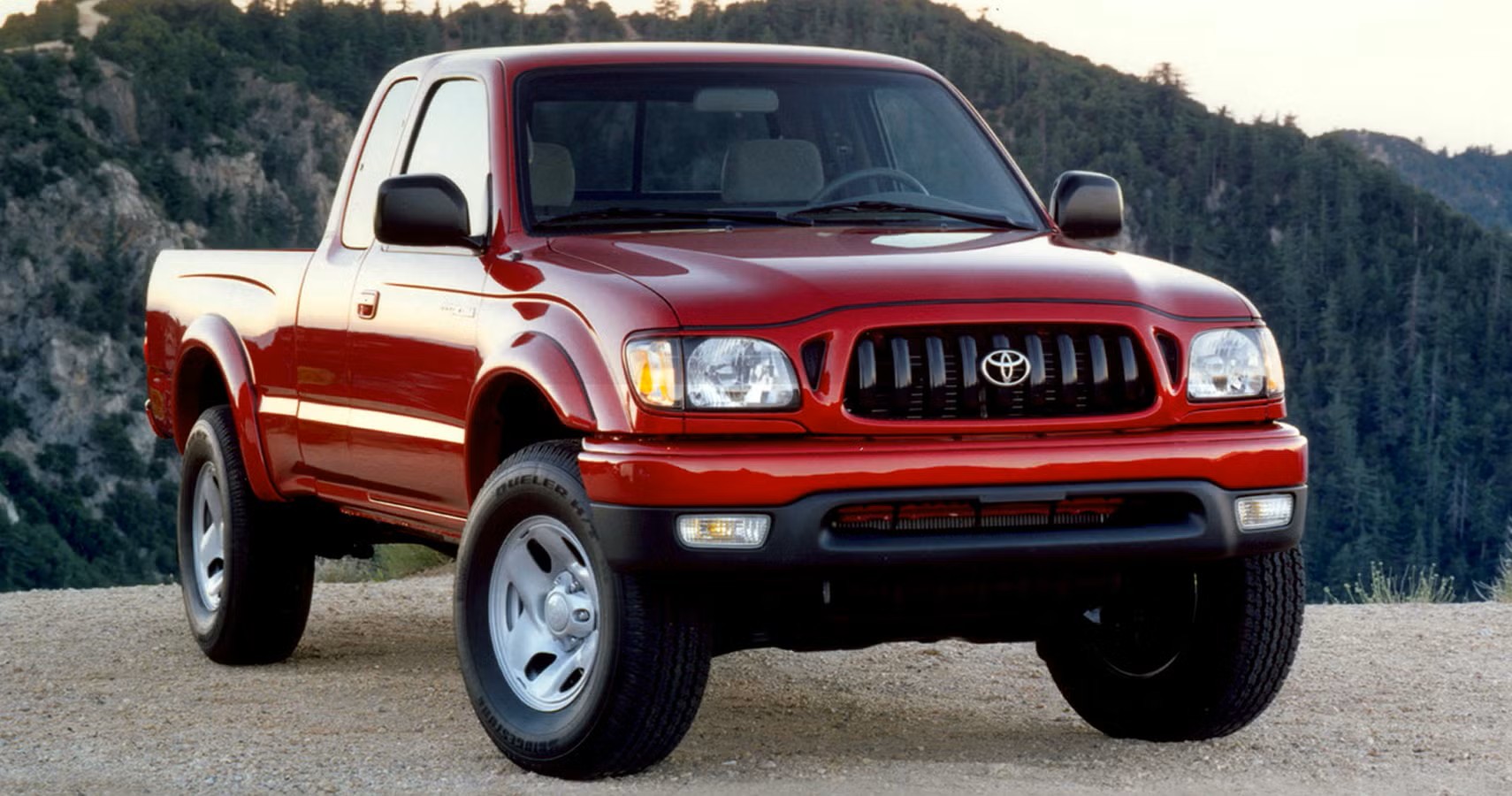
These engines frequently reach 300,000+ miles without major internal repairs when properly maintained. The manual transmissions are particularly robust, while the automatic transmissions, though occasionally requiring service at high mileage, generally outlast those of competitive models.
What truly separates the Tacoma from other trucks is its resistance to the cumulative effects of aging. After a decade of use, most Tacomas exhibit minimal frame rust (excluding certain model years with known issues), intact interior components, and electrical systems that function as intended.
Common failure points on other trucks power window motors, ignition switches, and fuel pumps, often remain operational well beyond the 200,000-mile mark on Tacomas.
Real-world evidence of the Tacoma’s durability is abundant. These trucks dominate the used market with high resale values, even with significant mileage.
The Tacoma’s proven record in demanding environments from construction sites to military applications in developing countries has cemented its reputation as the truck that refuses to die, regardless of how much abuse it endures.
2. Ford F-250/F-350 Super Duty (7.3L Powerstroke Era, 1999-2003)
The Ford Super Duty trucks equipped with the 7.3L Powerstroke diesel engine represent what many consider the gold standard for heavy-duty pickup durability.
These workhorses have established themselves as nearly indestructible platforms for serious work applications, routinely surviving decades of punishing service.
At the heart of these trucks’ legendary status is the 7.3L Powerstroke diesel engine, manufactured by International Navistar. This powerplant was deliberately underrated at 235-275 horsepower and 500-525 lb-ft of torque (depending on year), allowing it to operate well below its mechanical stress limits even under heavy load.
The engine’s simple design, free from the complex emissions equipment that plagues modern diesels, contributes significantly to its reliability. With proper maintenance, these engines routinely surpass 500,000 miles without requiring major internal repairs.
The drivetrain components supporting this exceptional engine were similarly overbuilt. The 4R100 automatic transmission, while not flawless, was designed to handle commercial applications and responds well to preventative maintenance.
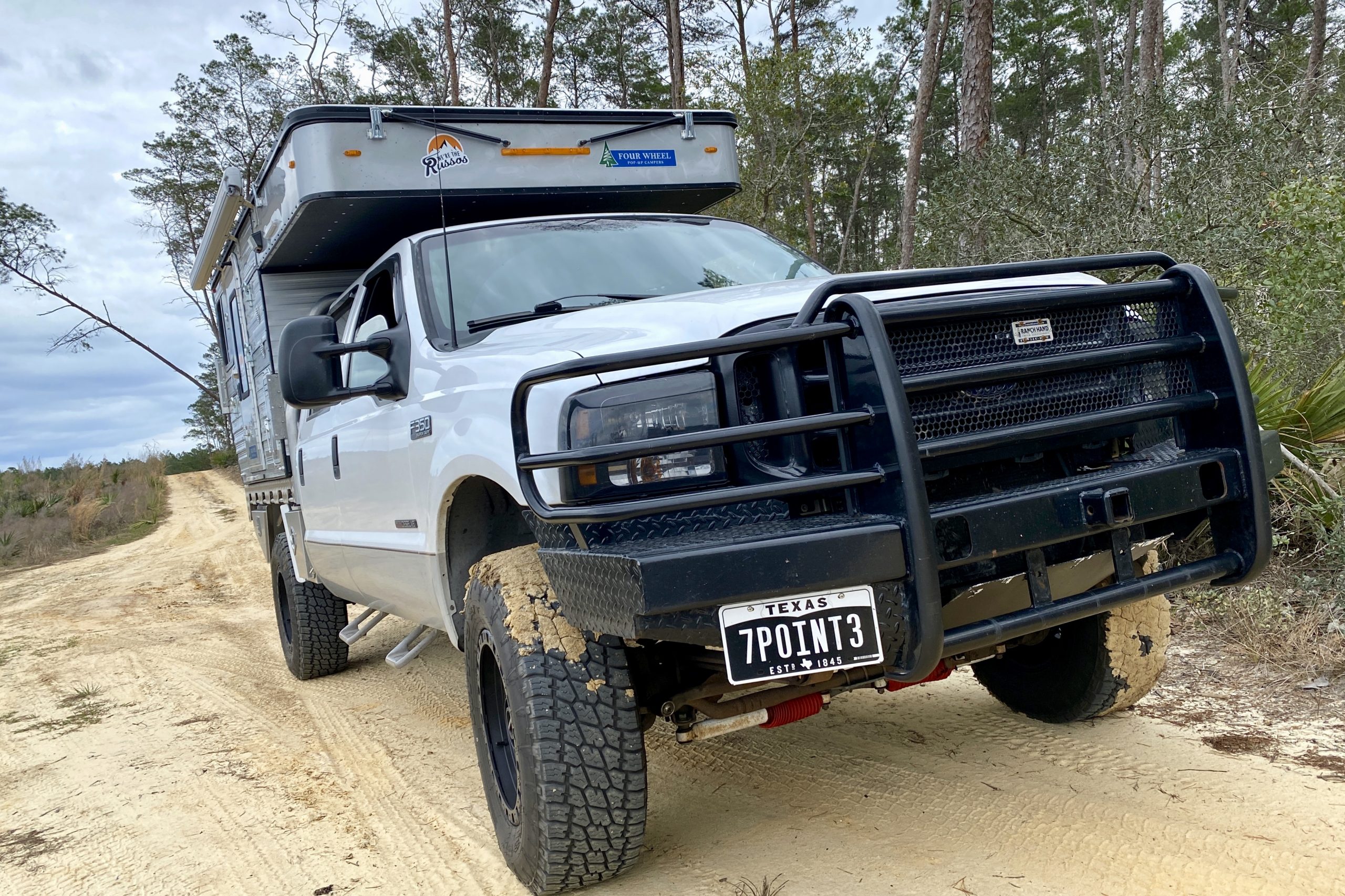
The transfer cases and differentials feature robust designs that withstand years of heavy towing and hauling without developing the play or wear that commonly affects lighter-duty trucks.
These Super Duty models were constructed during an era when Ford prioritized mechanical simplicity over electronic convenience features. This approach yielded trucks with fewer potential failure points in their electrical systems.
The interior components, though utilitarian by modern standards, were built with durable materials that resist cracking, fading, and wear even after years of heavy use by work crews.
The chassis and body construction further contribute to these trucks’ impressive longevity. The fully boxed frame resists twisting under heavy loads, while the body panels, particularly on models equipped with the aluminum hood, show strong resistance to rust and corrosion when properly maintained.
Even after a decade of commercial service, these Super Duty trucks typically maintain their structural integrity and functionality. The 7.3L Super Duty’s reputation is supported by its continued presence in commercial fleets and working farms long after production ceased.
These trucks command premium prices in the used market specifically because of their proven ability to withstand years of abuse while continuing to perform their intended functions without significant degradation.
3. Chevrolet Silverado/GMC Sierra 2500HD (2001-2007, Duramax LB7/LLY/LBZ)
The heavy-duty Chevrolet Silverado and GMC Sierra trucks from this era, particularly those equipped with the Duramax diesel engine and Allison transmission combination, have earned a well-deserved reputation for exceptional durability under demanding conditions.
The cornerstone of these trucks’ longevity is the Duramax diesel engine, which represents a significant engineering achievement. While the early LB7 version (2001-2004) had some well-documented injector issues, once addressed, these engines demonstrate remarkable durability.
The later LLY and especially the LBZ variants addressed these early concerns and are widely regarded as some of the most reliable diesel engines ever installed in a consumer pickup truck. With proper maintenance, these engines regularly exceed 300,000 miles without major internal repairs.
Perhaps the most significant contributor to these trucks’ durability is the Allison 1000 transmission. Derived from commercial vehicle applications, this automatic transmission was significantly overbuilt for pickup truck use, providing a substantial margin of safety when handling the diesel engine’s considerable torque.
Unlike many automotive transmissions, the Allison can withstand years of heavy towing and hauling without developing the slipping, harsh shifting, or complete failures that plague lesser designs.
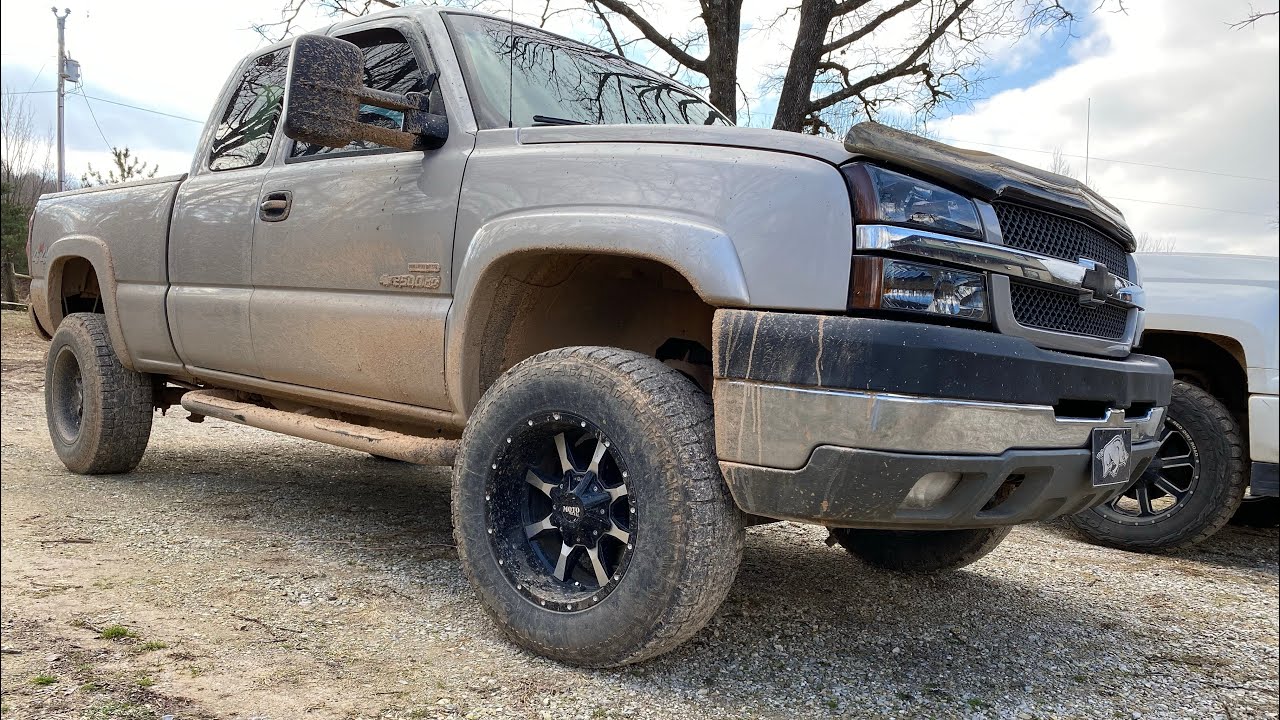
The structural design of these HD trucks features a fully boxed frame with exceptional torsional rigidity that maintains alignment even under heavy loads and rough conditions.
The suspension components, featuring torsion bar front suspension and leaf springs rear, were designed for commercial applications and resist sagging and wear far better than their light-duty counterparts.
These GM HD trucks also benefit from an electrical system that, while not perfect, was designed with redundancy and serviceability in mind. The interior components, though utilitarian, were constructed with materials that resist wear and maintain functionality over hundreds of thousands of miles.
Even frequently touched components like door handles, window switches, and HVAC controls typically remain operational well beyond 200,000 miles. Real-world validation of these trucks’ durability is evident in their continued use in demanding applications like snowplowing, construction, and agricultural work.
Many of these vehicles have accumulated 300,000+ miles while maintaining their core functionality and structural integrity, a testament to their exceptional engineering and build quality during an era when GM prioritized durability in their heavy-duty truck lineup.
4. Nissan Frontier (2005-2021)
The Nissan Frontier represents one of the most compelling examples of longevity through mechanical simplicity and evolutionary design. While lacking the flash and frequent updates of competitors, this midsize pickup has proven itself extraordinarily durable through a production run that remained largely unchanged for an astonishing 16 years.
The Frontier’s durability begins with its remarkably consistent powertrain. The 4.0L VQ40DE V6 engine, while not the most fuel-efficient in its class, demonstrates exceptional reliability due to its straightforward design and conservative tuning.
This engine routinely exceeds 250,000 miles without major internal repairs when properly maintained. Similarly, both the available manual transmission and the 5-speed automatic (while occasionally requiring service at high mileage) demonstrate longevity that exceeds industry averages.
The Frontier’s suspension system embodies rugged simplicity. The double-wishbone front and leaf spring rear suspension designs prioritize strength and serviceability over ride comfort.
This approach yields a truck that maintains its alignment and handling characteristics even after years of heavy use on rough terrain. The steering components, particularly the robust rack-and-pinion system, resist wear and maintain precision far longer than many competitors.
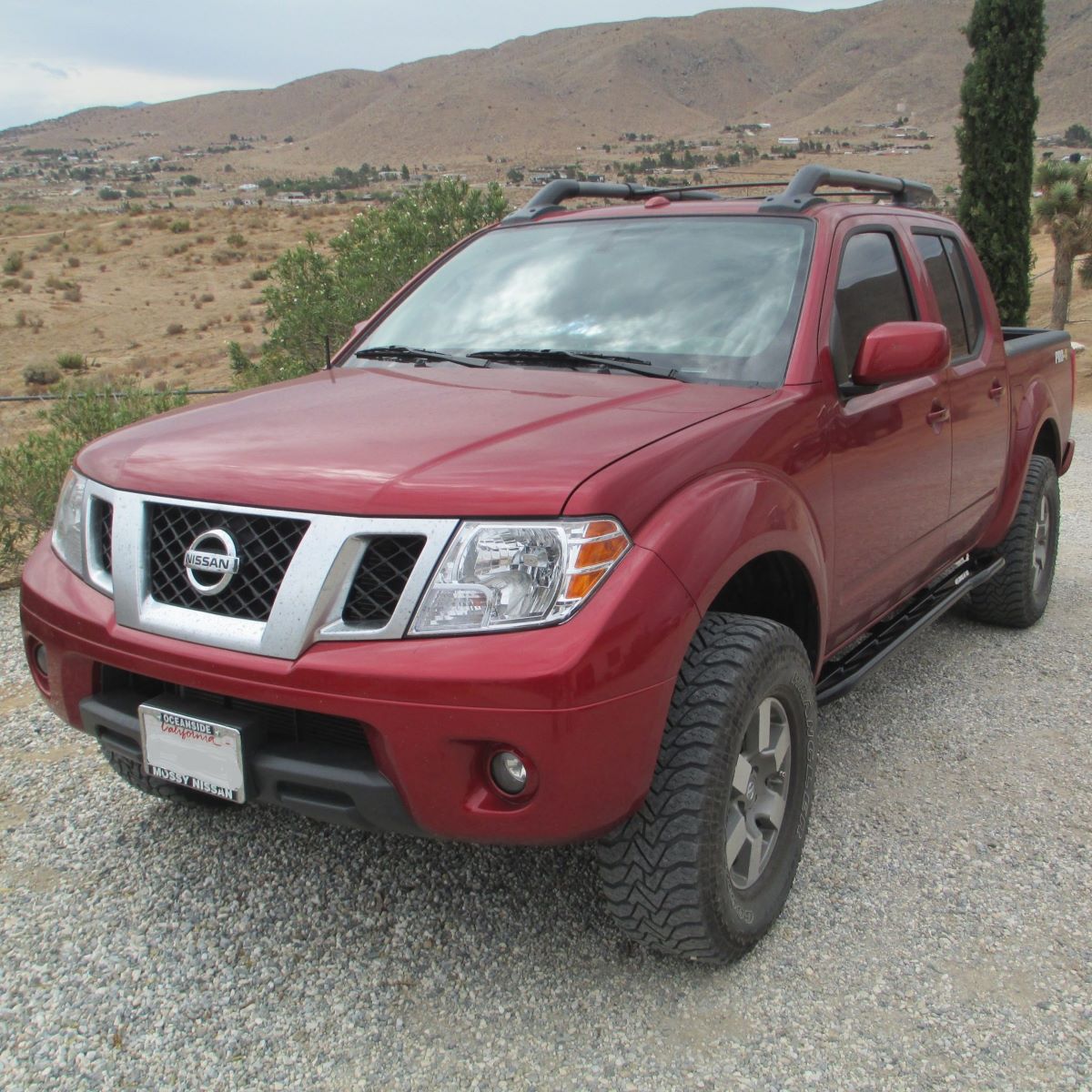
What truly sets the Frontier apart is how it weathered the test of time through minimal changes. While this meant the truck lacked the latest technology and refinement, it also meant Nissan had over a decade to identify and resolve any design flaws.
The result is a mature platform where common failure points were eliminated through incremental improvements while maintaining the core design. This evolutionary approach is rarely seen in modern vehicle development cycles but has proven highly effective for durability.
The Frontier’s electrical system demonstrates remarkable resilience, with few of the common electronic gremlins that plague more complex trucks.
Interior components, while utilitarian by modern standards, resist wear and maintain functionality through hundreds of thousands of miles of use. Even high-wear items like seat fabrics and door handles typically outlast those in competing trucks.
The Frontier’s longevity credentials are supported by real-world evidence of these trucks remaining in service long after most contemporaries have been retired.
Their continued presence in commercial fleets, particularly in industries requiring reliability under punishing conditions, speaks to their exceptional durability.
The Frontier stands as proof that sometimes engineering maturity and simplicity yield greater longevity than constant redesign and increasing complexity.
Also Read: 5 Diesel Trucks That Never Quit and 5 That Constantly Stall
5. Ram 2500/3500 (Cummins-Equipped, 2003-2007)
The Ram heavy-duty pickups equipped with the 5.9L Cummins diesel engine from this era represent some of the most durable work trucks ever produced for the consumer market.
These third-generation Ram HD models combine legendary diesel reliability with robust supporting components to create vehicles capable of withstanding extreme use for well beyond a decade.
The centerpiece of these trucks’ durability is the 5.9L Cummins inline-six diesel engine, particularly in its 24-valve common rail configuration. This powerplant, with roots in commercial applications, was significantly underrated from the factory at 305 horsepower and 555 lb-ft of torque (in later years).
The straight-six architecture inherently reduces vibration and mechanical stress compared to V-configuration engines, while the robust block and rotating assembly were designed for several times the stock power output. These engines routinely exceed 500,000 miles without internal failure when properly maintained, with many documented cases surpassing 800,000 miles on original internals.
The manual transmission options, particularly the NV5600 six-speed, complement the engine’s durability with their exceptional longevity. Designed for commercial applications, these transmissions withstand decades of heavy use with minimal maintenance requirements.
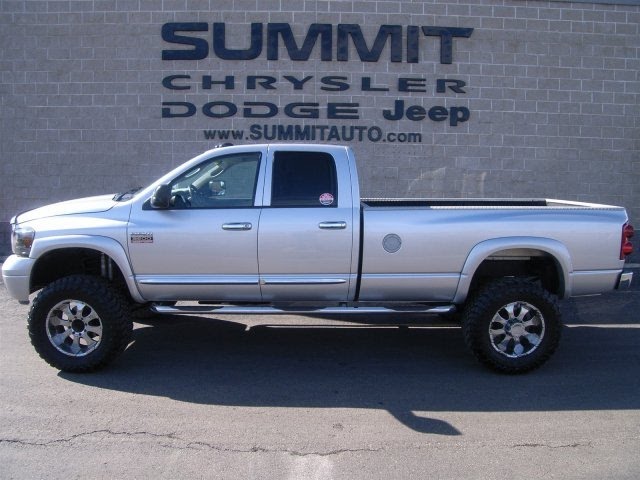
While the automatic transmissions (particularly the 48RE) require more attention and occasional rebuilds in high-stress applications, they generally outlast those in competing trucks when properly maintained.
The chassis and suspension components on these Ram trucks were designed specifically for heavy-duty commercial use. The frame features exceptional rigidity that resists flexing under heavy loads, while the suspension components, featuring solid front axles on the 4×4 models, prioritize strength and serviceability over comfort.
This approach yields trucks that maintain their alignment and functionality even after years of punishing use. What truly sets these Cummins-equipped Rams apart is their resistance to the complex emissions failures that plague newer diesel trucks.
The relatively simple design, particularly in the 2003-2007 models before the implementation of diesel particulate filters, eliminates many potential failure points. The resulting reliability in extreme conditions has made these trucks highly sought after in industries requiring dependable performance.
The real-world validation of these trucks’ exceptional durability is evident in their continued use in the most demanding applications: heavy towing, agricultural work, and commercial service.
Their ability to accumulate hundreds of thousands of miles while maintaining core functionality has created a strong secondary market where well-maintained examples command premium prices based specifically on their proven longevity and resistance to wear.
5 Trucks That Can’t Survive 10 Years of Abuse
Despite rugged marketing imagery, these fragile pickups quickly reveal their limitations when subjected to the genuine work demands that define true truck duty.
Their compromised frames develop fatigue cracks, suspension mounting points fail, and drivetrain components surrender after exposure to the loading cycles and terrain challenges that should be routine for proper trucks.
What begins as minor quality issues accelerates into serious structural and mechanical failures, with owners reporting catastrophic problems appearing well before the 100,000-mile mark.
The disappointing contrast between tough-truck advertising and disappointing real-world durability leaves owners facing repair bills that often exceed the remaining value of these prematurely aged disappointments.
1. Dodge Dakota (2005-2011)
The final generation of the Dodge Dakota represents one of the most disappointing reliability records in the midsize truck segment, with numerous design flaws and quality issues that prevent these vehicles from withstanding long-term use, particularly under demanding conditions.
Powertrain problems form the foundation of the Dakota’s poor durability. The 3.7L V6 and 4.7L V8 engines both suffer from design deficiencies that lead to premature failure.
The 3.7L is notorious for developing valve train issues before 100,000 miles, with dropped valve seats and broken rocker arms being common failure points.
The 4.7L, while stronger in some respects, is plagued by cooling system inadequacies that frequently lead to overheating and subsequent head gasket failures. Both engines exhibit oil consumption issues that worsen with age, eventually leading to accelerated wear and reduced compression.
The automatic transmissions paired with these engines represent another significant weakness. The 42RLE and 45RFE transmissions frequently develop harsh shifting, slipping, and complete failures before 150,000 miles, particularly when subjected to towing or heavy loads.
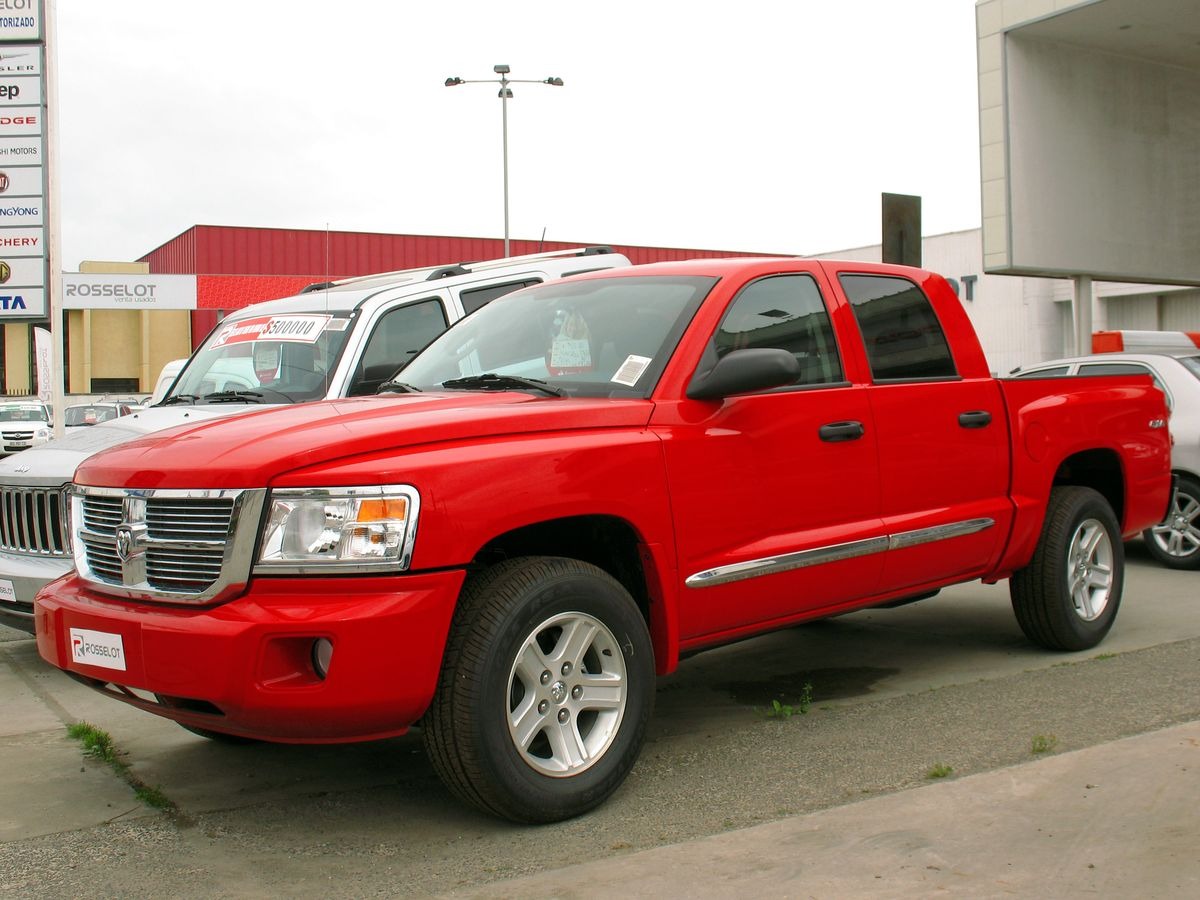
Transmission cooling is inadequate for sustained work applications, leading to fluid breakdown and accelerated wear of internal components. The cost of transmission replacement often exceeds the value of higher-mileage examples of these trucks.
The Dakota’s electrical system presents a third area of chronic failure. Instrument clusters commonly develop erratic behavior or complete failure, with odometer and gauge malfunctions being particularly prevalent.
The TIPM (Totally Integrated Power Module) represents a single point of failure that can disable numerous vehicle systems simultaneously when it inevitably fails, typically between 70,000-120,000 miles. Electrical gremlins multiply as these trucks age, with intermittent starting issues, failed power accessories, and erratic engine performance becoming increasingly common.
Structural integrity presents perhaps the most concerning aspect of the Dakota’s durability issues. The frame and body mounts are highly susceptible to corrosion, particularly in regions where road salt is used.
This corrosion often progresses to structural weakness that cannot be economically repaired. The suspension components, including ball joints and control arm bushings, typically fail prematurely, leading to unsafe handling characteristics and accelerated tire wear.
The real-world evidence of the Dakotas’ poor longevity is reflected in their rapid depreciation and scarcity in the used market beyond the 10-year mark.
These trucks typically require major component replacement long before reaching the 200,000-mile threshold that more durable competitors routinely surpass, making them economically unfeasible to maintain as long-term work vehicles.
2. Chevrolet Colorado/GMC Canyon (First Generation, 2004-2012)
The first-generation Chevrolet Colorado and GMC Canyon twins stand as cautionary tales in truck design, demonstrating how multiple engineering compromises can create vehicles fundamentally unsuited for long-term durability under regular use, let alone abuse.
The most significant durability issue with these trucks centers on their problematic engines. The 2.8L and 3.5L (later 2.9L and 3.7L) inline engines were developed with cost-cutting as a primary consideration, resulting in designs with inherent weaknesses.
These engines are notorious for developing excessive oil consumption as early as 60,000 miles, with many requiring complete rebuilds before reaching 150,000 miles.
The timing components, particularly the chains and tensioners, are prone to premature failure that can result in catastrophic engine damage. Head gasket failures are common, especially in the 3.5L/3.7L variants, often occurring between 80,000-130,000 miles and requiring expensive repairs.
Transmission durability represents another significant weakness. The automatic transmissions develop harsh shifting patterns and slipping, typically beginning around 100,000 miles, with complete failures common before 150,000 miles.
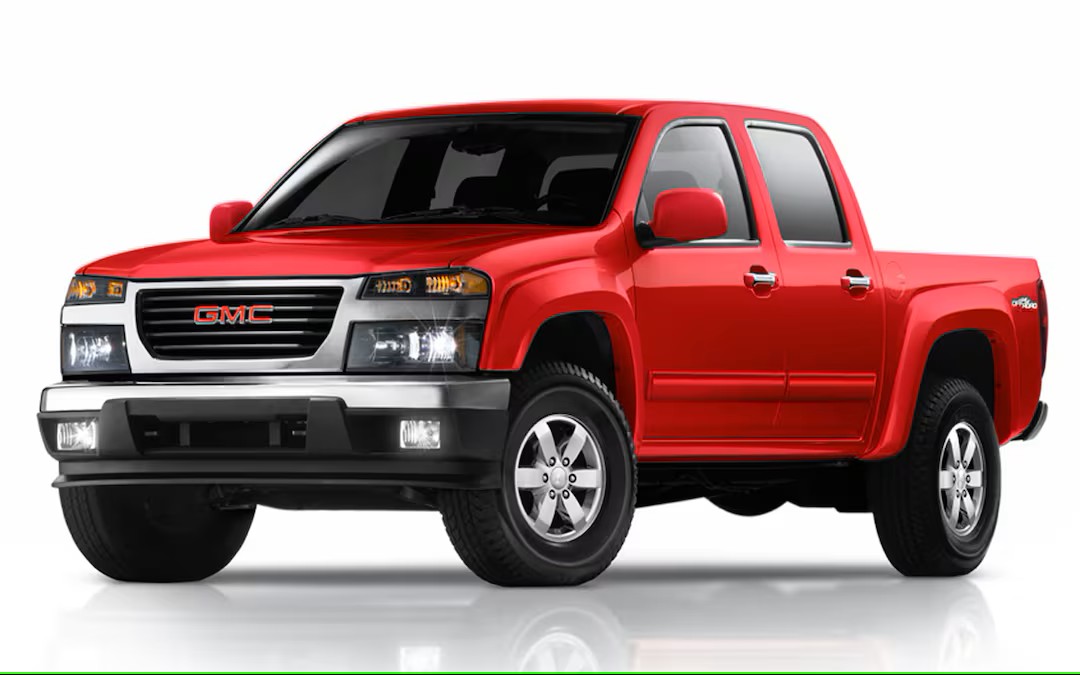
The transmission coolers are inadequate for any sustained work applications, leading to fluid breakdown and accelerated wear when these trucks are used for towing or hauling.
The electrical systems in these trucks deteriorate rapidly with age and use. Instrument cluster failures are particularly common, with gauge malfunctions and complete electrical failures occurring regularly.
The BCM (Body Control Module) frequently develops issues that can cause multiple systems to malfunction simultaneously. Wiring harness degradation leads to intermittent electrical problems that are difficult and expensive to diagnose and repair.
Structural integrity presents another area of concern. The frames on these trucks are susceptible to corrosion, particularly in regions where road salt is used. This corrosion often progresses to the point where it compromises the structural integrity of the vehicle.
The suspension components, including ball joints, tie rod ends, and control arm bushings, routinely fail prematurely, leading to unsafe handling characteristics and accelerated tire wear.
The interior components fail to withstand long-term use, with seat fabrics tearing, dashboard materials cracking, and door panels warping well before the 10-year mark. Similarly, exterior components like door handles, tailgate mechanisms, and light housings demonstrate poor durability compared to industry standards.
The real-world evidence of these trucks’ poor longevity is reflected in their rapid depreciation and relative scarcity in the used market beyond 150,000 miles.
Their tendency to develop multiple significant mechanical issues simultaneously around the 8-10 year mark makes them economically unfeasible to maintain as work vehicles for the long term.
3. Ford F-150 (2004-2008, 5.4L 3-Valve Triton)
The 2004-2008 Ford F-150 equipped with the 5.4L 3-valve Triton V8 engine represents one of the most problematic combinations of popular truck and engine in recent memory.
Despite the F-150’s general reputation for durability, this particular generation with this specific powertrain has proven incapable of withstanding long-term heavy use without significant failures.
The 5.4L 3-valve Triton engine forms the epicenter of this truck’s durability issues. This powerplant is notorious for multiple design flaws that lead to expensive failures.
The cam phaser system frequently fails between 70,000-120,000 miles, causing a distinctive ticking noise, reduced power, and poor fuel economy. When these phasers fail, they often damage the timing components, potentially leading to catastrophic engine failure.
Additionally, the spark plug design is fundamentally flawed, with the 2004-2007 models prone to spark plugs breaking during removal (requiring expensive extraction) and the 2008 models susceptible to spark plugs blowing out of the cylinder head completely, causing extensive damage.
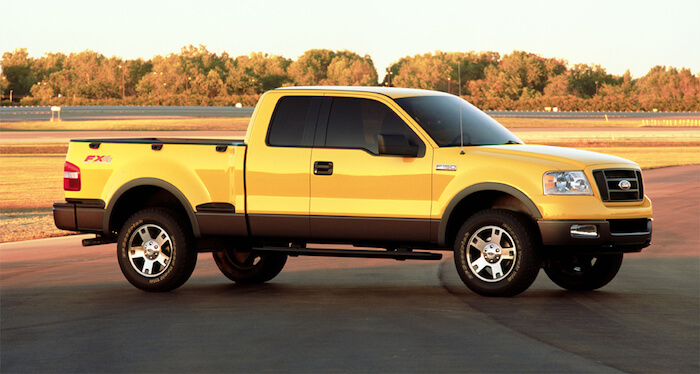
Fuel system problems compound the engine issues. The fuel pump driver module, mounted to the frame where it’s exposed to road debris and moisture, frequently fails due to corrosion. This design flaw leaves drivers stranded without warning when the module fails, typically between 80,000-150,000 miles.
The electronic throttle body also demonstrates poor longevity, frequently failing and causing erratic idle and acceleration issues. The automatic transmissions paired with these engines present another significant durability concern.
The 4R75E transmission is prone to developing harsh shifting, slipping, and eventual complete failure when subjected to the stress of towing or hauling, precisely the activities these trucks were marketed. Transmission coolers are inadequate for sustained work applications, leading to fluid breakdown and accelerated wear.
The electrical system deteriorates rapidly under real-world conditions. Instrument cluster failures are common, with gauge malfunctions and illumination issues occurring regularly after 100,000 miles.
The door-mounted keypad entry systems frequently fail due to exposure to the elements, while window regulators and power door lock actuators demonstrate poor longevity compared to competitors.
Structural concerns manifest primarily in the form of premature frame and body mount corrosion, particularly in regions where road salt is used. The suspension components, including ball joints and control arm bushings, typically require replacement well before competitors, leading to unsafe handling characteristics and accelerated tire wear.
The real-world evidence of these trucks’ poor long-term durability is reflected in their rapid depreciation once they exceed 150,000 miles. The frequency and expense of major component failures make them economically unfeasible to maintain as work vehicles beyond the 10-year mark, despite their initial popularity and Ford’s strong reputation in the truck market.
4. Nissan Titan (First Generation, 2004-2015)
The first-generation Nissan Titan, despite its impressive specifications and initial reception, has proven itself remarkably vulnerable to the rigors of long-term use, particularly when subjected to the demands of regular work applications.
Powertrain issues form the foundation of the Titan’s durability problems. The 5.6L VK56DE V8 engine, while powerful, exhibits several design flaws that lead to premature failure.
The timing chain tensioners and guides frequently wear prematurely, creating a distinctive rattling noise that precedes catastrophic engine damage if not addressed.
Oil consumption becomes problematic as these engines age, often requiring quart-per-1,000-mile additions by 150,000 miles. The exhaust manifolds are prone to cracking, creating expensive repair bills and performance issues.
The transmission represents perhaps the Titan’s most significant weakness. The RE5R05A 5-speed automatic develops harsh shifting patterns, slipping, and complete failures at a far higher rate than competitor transmissions, particularly when subjected to towing or hauling.
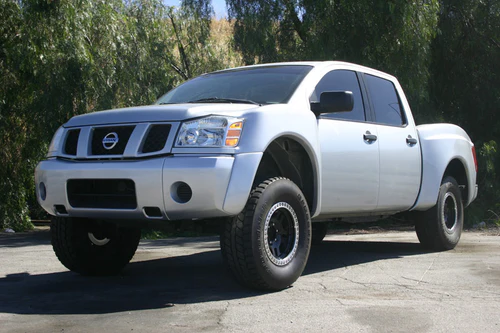
Transmission coolers are inadequate for sustained work applications, leading to fluid breakdown and accelerated wear. Replacement or rebuilding typically becomes necessary between 100,000-150,000 miles, well before the truck’s structural components have reached their useful lifespan.
The electrical system deteriorates rapidly with age and use. The ECM (Engine Control Module) is vulnerable to failure from heat and vibration, often requiring expensive replacement.
Numerous sensors throughout the engine and emissions system demonstrate poor longevity, leading to check engine lights and performance issues. The IPDM (Intelligent Power Distribution Module) frequently fails, causing multiple electrical systems to malfunction simultaneously.
The rear differential presents another common failure point. The factory design lacks adequate cooling and lubrication under sustained heavy use, leading to premature bearing failure and complete differential rebuilds typically necessary between 80,000-140,000 miles.
This represents a particularly expensive repair that often exceeds the value of higher-mileage examples. Structural integrity concerns manifest primarily through suspension component failures.
The front control arms and bushings degrade rapidly compared to competitors, creating unsafe handling characteristics and accelerated tire wear. The rear leaf springs commonly sag under regular use, reducing payload capacity and creating handling imbalances.
The real-world evidence of the first-generation Titan’s poor longevity is reflected in their scarcity in the used market beyond 150,000 miles and their rapid depreciation once major component failures begin to cascade.
While some examples have achieved high mileage through diligent maintenance and remediation of design flaws, the average Titan from this generation requires significant investment to remain operational beyond the 10-year mark, making them economically unfeasible to maintain as long-term work vehicles.
5. Toyota Tundra (2007-2013, 5.7L Models)
The 2007-2013 Toyota Tundra equipped with the 5.7L V8 engine represents one of the more surprising entries on this list, given Toyota’s general reputation for reliability.
However, this particular generation of Tundra demonstrates how even Toyota can miss the mark when it comes to creating truly durable work trucks capable of withstanding a decade of abuse.
The 5.7L 3UR-FE V8 engine, while powerful, harbors several design flaws that compromise long-term durability. The most significant issue affects the cam tower seals, which frequently fail between 80,000-150,000 miles, causing oil leaks into the spark plug tubes.
This leads to misfires, fouled plugs, and potential damage to the ignition coils. Additionally, the water pump design is prone to premature failure, often requiring replacement before 100,000 miles. The exhaust manifolds frequently develop cracks at the mounting flanges, creating expensive repair bills well before the 10-year mark.
The automatic transmission exhibits better durability than some competitors but still falls short of true long-term reliability. The AB60 6-speed automatic transmission develops harsh shifting and torque converter shudder issues as mileage accumulates, particularly when subjected to regular towing.
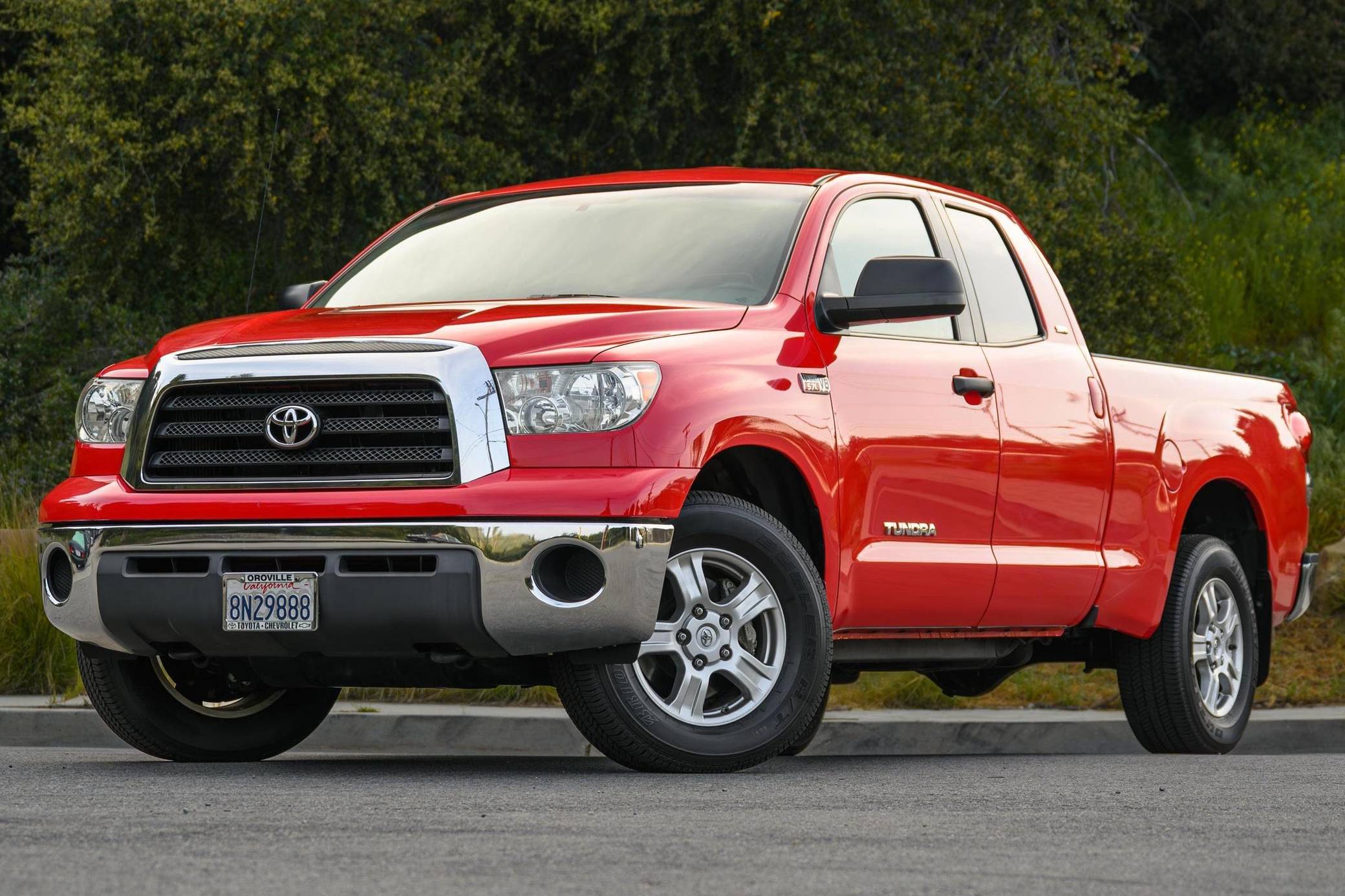
Transmission fluid cooling is inadequate for sustained heavy use, leading to premature wear and potential failures between 150,000-200,000 miles. The most infamous durability issue with these Tundras involves the exhaust system’s Air Injection Pump system.
This emissions component frequently fails between 80,000-120,000 miles, triggering check engine lights and potential driveability issues. The replacement cost is exceptionally high due to the pump’s integration with the exhaust manifolds, often exceeding $3,000 at dealerships.
Suspension durability presents another area of concern. The lower ball joints are notorious for requiring replacement far earlier than industry standards, typically between 60,000-100,000 miles.
The front struts and rear shocks demonstrate poor longevity, creating unsafe handling characteristics and accelerated tire wear when they inevitably fail. The factory air suspension system (when equipped) rarely survives beyond the 8-year mark without expensive component replacements.
Frame rust represents the most severe structural issue with these trucks. While not as widespread as the recall-inducing rust on earlier Tundras and Tacomas, these 2007-2013 models still exhibit frame corrosion at accelerated rates, particularly in regions where road salt is used.
This corrosion often progresses to the point where it compromises the structural integrity of the vehicle beyond economical repair.
The real-world evidence of these Tundras’ limited longevity is reflected in their faster-than-expected depreciation once they exceed 150,000 miles and the frequency of major component replacements required to keep them operational.
While they generally outlast the worst offenders in the truck market, they fall significantly short of the durability standard set by other Toyota products and fail to deliver the decade-plus of reliable service that true work trucks should provide.
Also Read: 5 SUVs That Stay Cool in Summer and 5 That Constantly Overheat

